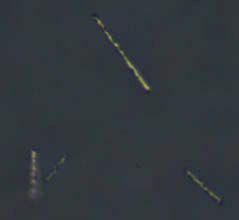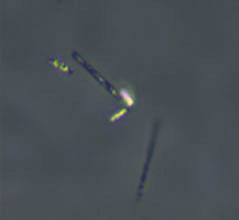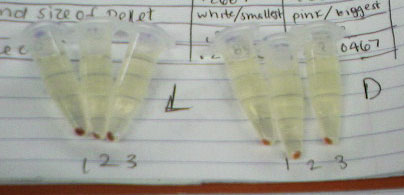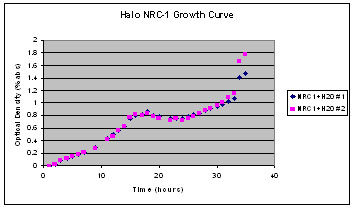|
Halobacteria belong to the Archea domain. Organisms belonging to Domain Archaea are different from those that belong to the Eukaryota and Bacteria domains. Though Archaea and Bacteria are both unicellular, Archaea have a distinct evolutionary history are biochemically different. Halobacteria are extremophiles, organisms that are able to live in extreme environments, such as high salinity, low temperatures, high temperatures, excessive oxygen, etc. Halobacteria need high salinity environments, such as The Great Salt Lake, in order to survive. They are motile rod shaped bacteria that reproduce using binary fission.


Halobacterium that appear to be “glowing” are actually filled with gas vesicles that they use to float to the surface to get more oxygen or light. Some appear to have more gas vesicles than others, a phenomenon that is currently unexplained.

Halobacteria produce a light sensitive protein called bacteriorhodopsin on its cell membrane. This protein functions as a proton pump and converts light energy into chemical energy for the production of ATP. When more light is present Halo produces more bacteriorhodopsin and appears to be more purple (left three tubes).

The number of Halo cells doubles in about 6 hours. Halo is very sensitive to it's enviornment; if there are too many cells, not enough food or too little oxygen, they are able to adapt their behavior to their enviornment. This is why there is an ideal optical density for the cells to grow at (between .6 and .8, depending on the length of the experiment.)
|